
On a windless gray day in Waterloo, Wisconsin, when solar or wind-powered farms might be switching on their back-up generators, cheesemaker George Crave doesn’t miss a beat. His family’s farm and creamery run on renewable energy, as do their homes. Whether pumping 100,000 pounds of milk into the creamery or heating that milk to make 10,000 pounds of cheese daily, George can count on this energy, because it comes from one of nature’s most reliably unceasing outputs—poop.
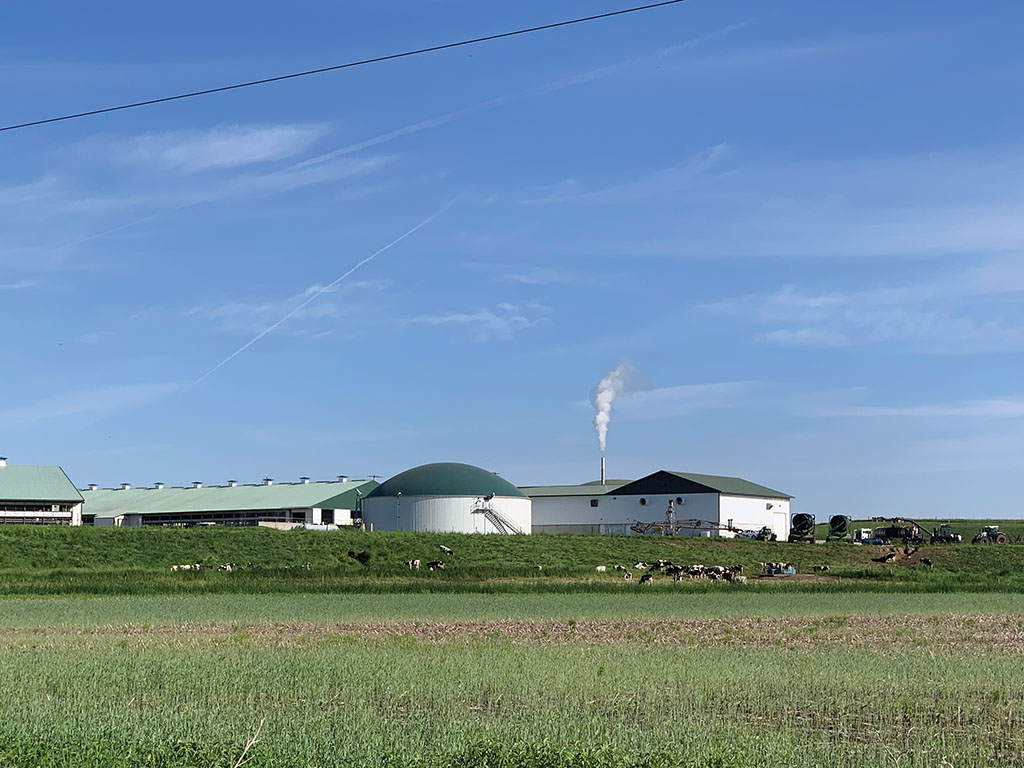
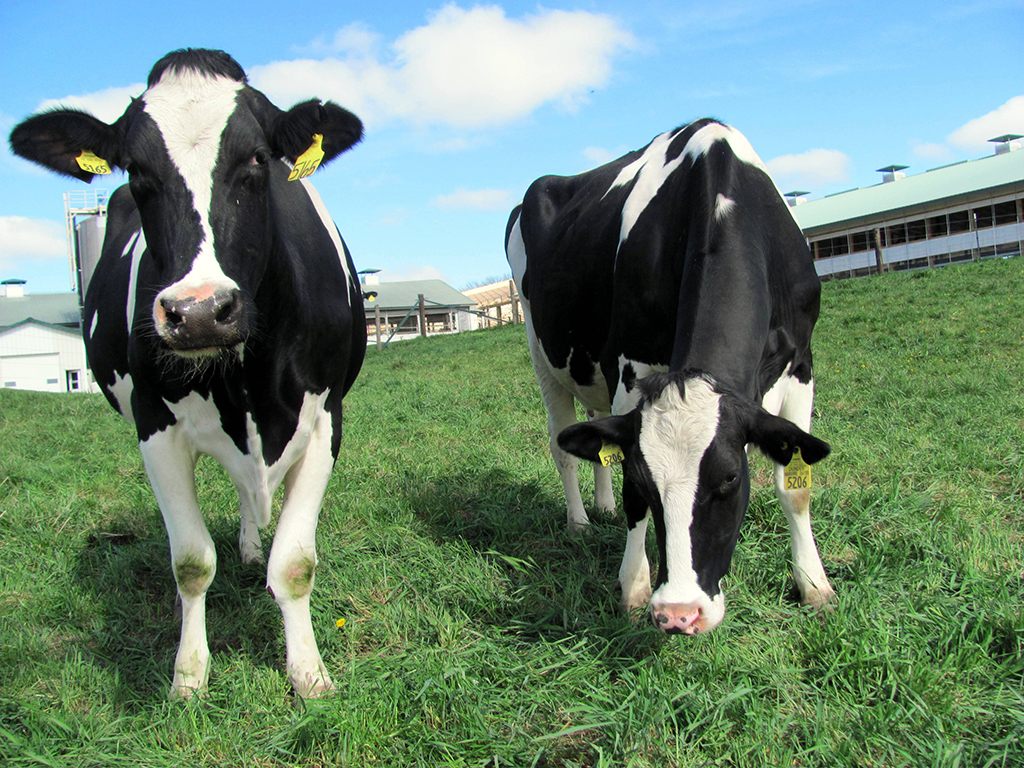
We make it every day,” George said of the waste that powers his business. We spoke on Waterloo’s first sunny day in over a month, when George was feeling particularly grateful for the machine that converts his cows’ manure into electricity. “You wake up at midnight, it’s running, you come out at 6 in the morning, it’s running. On a Saturday, it’s running, on a rainy cold snowy day, it’s operating, because we have new fuel consistently.”
That fuel is the methane emitted by cow excrement. A potent heat-trapping greenhouse gas, methane accounts for at least a quarter of today’s global warming and is at least 25 times more harmful than carbon dioxide—that is, when it’s released into the air. The Craves, along with enterprising cheesemakers across the globe, are using something called a methane digester to convert these emissions into energy before they even reach the atmosphere.
MAKING CHEESE SUSTAINABLE
The first time I attempted to reach the Craves, they were hopping on a plane to Switzerland to visit Käserei Holzhof, a dairy that also runs on methane. George and his wife Debbie Crave, president and vice president of Crave Brothers Farmstead Cheese respectively, call these educational trips “working vacations,” and they go on them a lot. Before releasing their first cheese in 2001 (a mozzarella), they visited France, Switzerland, and Italy.
George and his brothers Mark, Charles, and Tom run the Crave operation, which they started after learning the ropes on their dad’s dairy farm. Debbie grew up nearby and met George at a county 4-H Christmas caroling activity when the two were in high school. Now, they live on the 3,000-acre Crave farmstead—along with all the brothers and their adult children. Their methane digester produces enough energy to power every building on the property, and 300 homes beyond that. “Some people will say, ‘Oh my employees ride their bikes to work,’ or ‘I recycle boxes,’” Debbie said. “Okay, we do all that, but we also produce enough electricity for our businesses and [neighboring] homes.”
How that works looks different for every farmer—as of November 2019, there were 254 digesters on dairy farms in the US. For the Craves, it takes the form of two massive 750,000-gallon anaerobic tanks. These green-domed circular vessels take in manure, whey, and food waste from the farm and neighboring businesses (apparently, French fry grease burns great). The resulting slurry emits methane, which is piped out of the tanks into a generator that burns the gas, turning it into electricity. What’s leftover is sorted, with liquids fertilizing the fields and solids dried into cow bedding.
“Some people will say, ‘Oh my employees ride their bikes to work,’ or ‘I recycle boxes.’ Okay, we do all that, but we also produce enough electricity for our businesses and [neighboring] homes.”
Debbie Crave
“It’s very soft, very little odor,” George said when I expressed doubts about the cows sleeping in their own…well, you know. “If you’re familiar with potting “If you’re familiar with potting soil, you know you squeeze it real hard and it still opens back up, that’s what it’s like. The cows really like it, and then of course we don’t have to buy bedding or use straw.”
Contrary to what you might expect from a giant gas tank, digesters actually reduce odor. On farms without digesters, waste is often stored in open lagoons or spread onto fields, releasing methane (not to mention stink) into the air. Practices like open-air lagoons make dairy farmers responsible for a sizable chunk of global methane emissions. According to the California Air Resources Board, more than half of the state’s methane emissions come from dairy farms.
Perhaps not surprisingly, states like California and Vermont are at the forefront of efforts to get more digesters on farms. In 2016, California Governor Jerry Brown signed Senate Bill 1383 into law, calling for a 40 percent statewide reduction in greenhouse gas emissions from 2013 levels by 2030, a goal aided by aggressive funding. Last year, the California Department of Food and Agriculture made $61–75 million available to farmers in grants for the Dairy Digester Research and Development Program.
“The state goal has definitely been a boon to our business,” said Doug Bryant of Maas Energy Works, a consultancy that works with farms to install digesters. Before the bill, Maas put one or two projects online each year; now, they have 40 digesters in development.
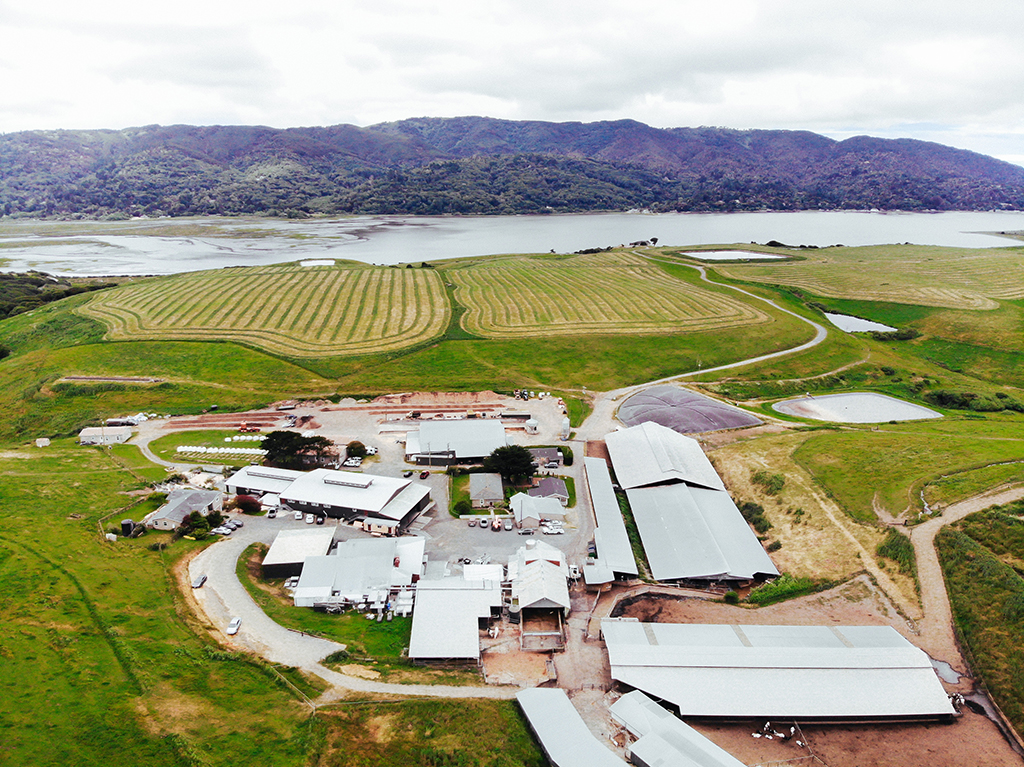
Maas consulted the Point Reyes Farmstead Cheese Company, known for their award-winning blue cheeses, on the digester they installed in 2009. Similar to the Craves’ in function, this digester on Point Reyes’ scenic Tomales Bay farm would not have been possible without state funding.
“We were able to utilize both state and federal subsidies and grants to help us with the initial installation,” said Jill Giacomini Basch, who owns Point Reyes with her four sisters and their father, Bob. Four generations of Giacominis have farmed California land, starting with grandpa Tobias, who emigrated from Italy in 1904.
Nowadays, the Giacominis run a very green operation—from the digester to farming that maximizes carbon sequestration and controls erosion. They use a low-emission no-till drill; capture urine and wastewater through a flushing system that uses, and produces, recycled water; and pull residual heat off their methane-conversion generator to heat water for cheesemaking and sanitation. All told, they pay about 50 percent less on their energy bills than before installing the digester.
TURNING POOP INTO PROFIT
Meanwhile, in Vermont—the California of the East Coast, as far as green energy goes—a utility-owned program called Cow Power provides farm-made energy to consumers (and revenue to farmers) by giving them the option to pay a four-cent surcharge per kilowatt hour on their energy bill to get power from methane digesters.

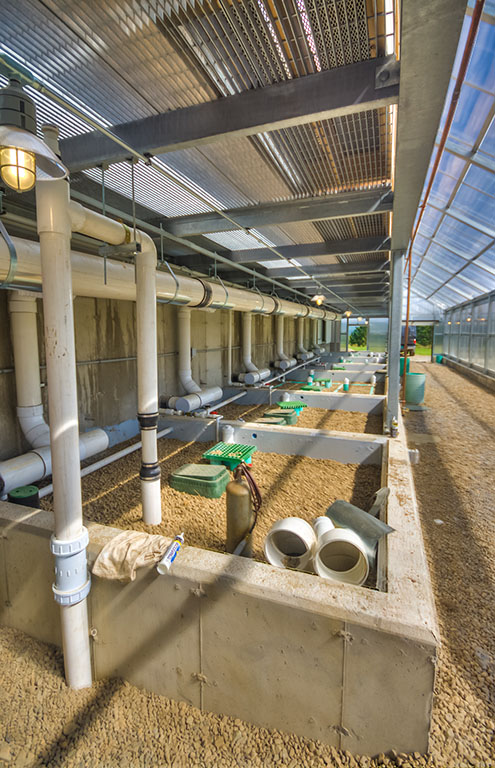
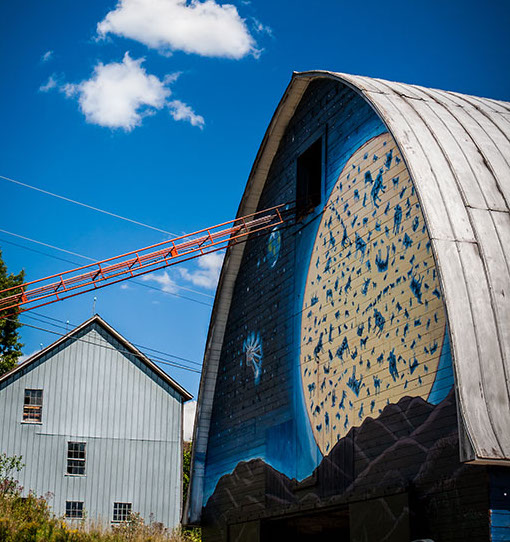
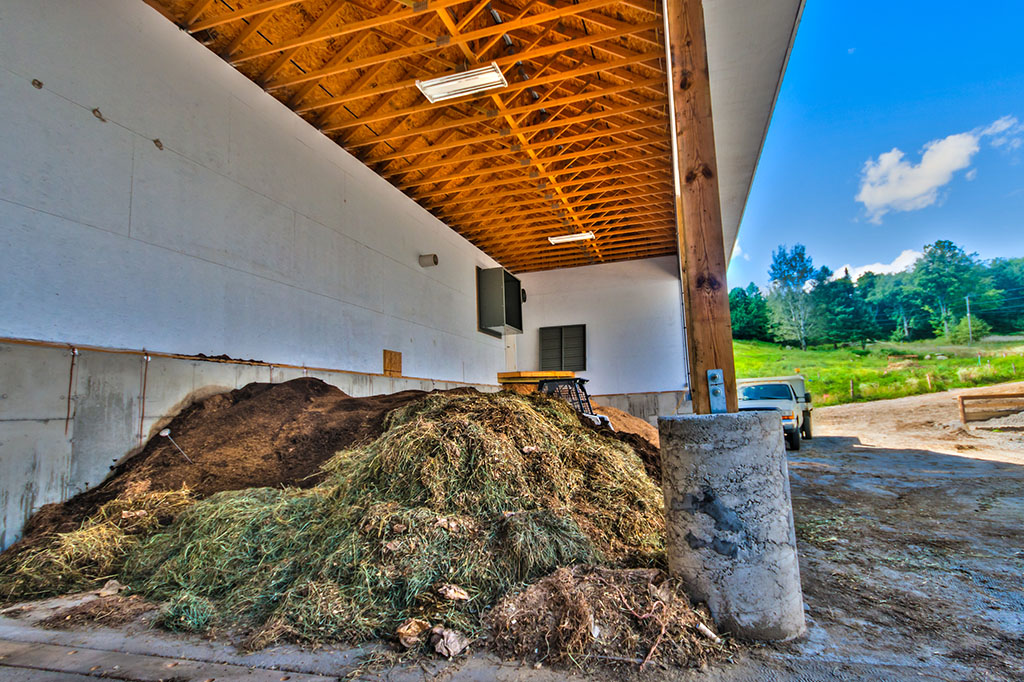
Though not eligible for this program, the esteemed cheesemakers at Jasper Hill Farm in Greensboro, Vermont, have really leaned into making the most of their manure. Their digester doesn’t produce electricity (their solar panels do that), but it does generate enough heat to keep a glass-walled greenhouse growing Meyer lemon, fig, and banana trees year-round.
“We built a system—it was not a purchased machine, as the [digester] technology has not been miniaturized for our small-scale dairy,” said Mateo Kehler, who co-owns Jasper Hill with his brother, Andy. Mateo lives above the creamery, in a building adjacent to the Green Machine—their name for the digester and greenhouse.
Funded in part by state and federal grants, the Green Machine funnels liquid waste, whey, and wash water into three small methane digesters on the greenhouse floor that power the creamery boiler. Just outside, dry waste cures on top of valves that suck hot, moist air down and pipe it into the greenhouse. Once anaerobic fermentation is complete, the solids become barn bedding while the liquid empties into greenhouse reservoirs where microorganisms, aquatic animals, and minerals perform filtration. What remains is a fertilizer that spawns pea shoots, tomatoes, and other veggies on a catwalk suspended above the digesters.
“The structure was conceived of and built to avoid installing a manure lagoon in the backyard of the Kehler’s home,” said Zoe Brickley, Jasper Hill’s director of development and marketing. “It was less about powering the farm and more about trying to rethink the normal ways of managing a dairy farm’s waste stream.”
That management gets more difficult during the summer, when Jasper Hill’s cows spend all day in the fields and it’s difficult to capture manure—a problem posed by any grass-grazed herd.
“You can’t tell the cows to come in at night and save your poop ‘til you get back into the barn,” said George Crave of Crave Brothers. And the challenges don’t stop in winter—when Wisconsin experienced a 30-below cold snap last year, the Craves had to use a back-up boiler to heat the manure in the digester to the temperature needed for methane production. Without enough heat to make methane, they can’t make heat at all.
MANAGING THE HICCUPS
Even with these kinks, it’s tempting to view methane digesters as a silver bullet. They represent a comprehensive solution to three of the largest environmental concerns of our generation—excessive waste, greenhouse gas emissions, and energy shortages. But like most things that seem too good to be true, digesters fall just short of perfect.
“It was less about powering the farm and more about trying to rethink the normal ways of managing a dairy farm’s waste stream.”
Zoe Brickley, Jasper Hill Farm
Manure accounts for only half of cattle methane emissions—the other half comes from burps. Yep, just when you thought a story about poop couldn’t get more puerile, we must contend with enteric emissions, the fancy term for methane produced by bovine belches. A woman named Joan Salwen has been developing a seaweed-based cattle feed that claims to reduce enteric emissions by 70 percent when added to regular dry feed, but that doesn’t mean you’ll be seeing “seaweed-fed” on your cheese label any time soon.
“Experimenting with any new feed means that flavors in our products could potentially change,” said Jill Giacomini Basch of Point Reyes. As a farmstead creamery, Point Reyes’ main concern is their cheese’s flavor profile, and according to Jill, “feed flavor” is a thing.
Feed solutions are also problematic for grass-fed herds. Even if farmers could lead grazing cows to seaweed, they can’t make them eat it. “Much caution is needed with these to be sure the animals will still eat the food,” said Deanne Meyer, Livestock Waste Management Specialist at University of California, Davis. She also worries that the energy to grow, dry, and transport seaweed could void any benefit from reduced emissions.
Manure digesters have a similar robbing-Peter-to-pay-Paul problem. According to Joe Rudek, a scientist with the Environmental Defense Fund, digesters only create a climate benefit if they replace fossil fuels, not add to global fuel production—which is what some cash-strapped farmers must do to stay solvent. There are no state grants available for methane digesters in Wisconsin (the Craves built their system on bank loans), so some farmers forego expensive electricity-generating systems to instead convert their methane into natural gas that can be sold directly into pipelines.
George Crave had just returned from Europe when we spoke, where he’d toured areas powered by civilian-subsidized sustainable energy, with digesters numbering in the thousands. He told me that he views farmers as the original recyclers, and American farmers as the caretakers of the country’s best natural resource: our dirt. To Crave, most farmers with digesters are saying the same thing: “We like it, we’re proud of what we’re doing, but gee whiz, it’d be nice to get paid for it.”
WHERE THERE’S A WILL THERE’S A WHEY

When you separate milk, curds become cheese and whey becomes…a business opportunity, depending on who you ask. Whey is the largest waste product in cheesemaking, aside from manure—but it doesn’t have to be. Read on for just a few of the ways cheesemakers are turning this watery byproduct into wine.
Feed the animals: From the makers of Prosciutto di Parma to Wisconsin’s Uplands Cheese, “whey-fed pork” is definitely a thing.
Make hooch: Whey can ferment into booze, which sounds niche as hell ‘til you realize it’s happening in the US, Canada, France, the UK, New Zealand, and Australia, where cheesemakers at Grandvewe Cheeses sheep dairy make vodka, gin, “whey-sky,” and vanilla liqueur. In Ireland, one distillery even makes a sloe milk gin.
Join the fancy water fad: Boston-based Superfrau crafts traditional Alpine refreshers out of upcycled whey, in combos like Elderflower Lemon and Cucumber Lime. In New York, Iranian yogurt makers White Moustache turn their whey into Passionfruit and Pineapple Probiotic Tonics.
Treat yourself: Dairies in the Italian and Swiss Alps are creating a new revenue stream by offering whey baths, facials, and massages—apparently, the protein-rich substance has skin-softening and anti-aging properties.




